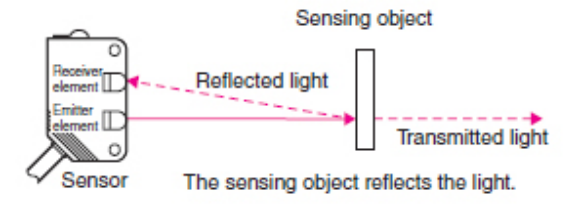
In today's digital era, photoelectric sensors play a crucial role in the electronic components industry. As highly intelligent sensors, photoelectric sensors use the photoelectric effect to detect the presence, distance, and other attributes of objects. This article will explore the working principles, characteristics, advantages, and wide-ranging applications of photoelectric sensors.
Catalog
I. What are Photoelectric Sensors?
IV. Characteristics & Advantages
I. What are Photoelectric Sensors?
Photoelectric sensors are electronic devices used to detect the position, distance, color, and other properties of objects. Their fundamental principle is to use electrical signals generated by the photoelectric effect to achieve detection functions. A photoelectric sensor primarily consists of an emitter for emitting light and a receiver for receiving light. They work by emitting an infrared beam and receiving the reflected signal.
II. Working Principle
The working principle of photoelectric sensors is based on the photoelectric effect. When light hits the surface of an object, the object reflects, absorbs, or transmits the light. When the emitted light is interrupted or reflected by the sensing object, it changes the amount of light that reaches the receiver. The receiver detects this change and converts it into an electrical output. The light source for most photoelectric sensors is infrared or visible light (generally red, or green/blue for identifying colors).
III. Classification
Photoelectric sensors are classified as shown below:
· Through-beam Sensors: These sensors consist of a transmitter and a receiver placed on opposite sides of the detection area. When an object passes through, it interrupts the light beam, causing the receiver to detect the absence of light, thus identifying the object's presence.

· Retro-reflective Sensors: These sensors work by emitting a light beam towards a reflector, which then returns the light to the receiver. When an object enters the beam path, it partially or fully blocks the light, causing the receiver to detect the object.

· Diffuse-reflective Sensors: These sensors rely on the object itself to reflect the emitted light beam. Unlike retro-reflective sensors, they do not require a specific reflector. The light beam directly hits the target, and the reflected light is detected by the receiver.

IV. Characteristics & Advantages
· High Precision: Photoelectric sensors offer highly accurate detection capabilities, achieving millimeter-level or even higher precision.
· Fast Response: These sensors have a rapid response time, capable of detecting changes in objects instantly.
· Versatility: Photoelectric sensors can be customized to meet different application needs and come in various forms and operational modes.
· Durability: These sensors typically exhibit high durability and stability, able to function reliably in harsh environments.
V. Applications
Photoelectric sensors are widely used in the electronic components industry, including the following fields:
· Industrial Automation: On production lines, photoelectric sensors detect the position, direction, and speed of objects, facilitating automated production processes.
· Robotics: They are essential components of robotic vision systems, helping robots perceive their surroundings and perform tasks.
· Security Systems: In the security sector, photoelectric sensors are used in monitoring systems to detect the entry or exit of people or vehicles, and other security events.
· Consumer Electronics: They are also widely used in consumer electronics, such as smartphones and tablets, for touchscreens, light sensing, and other functions.
VI. Conclusion
As a key technology in the electronic components industry, photoelectric sensors are driving the development of industrial intelligence and digital transformation. Their high precision, fast response, and versatility make them broadly applicable in various fields. With continuous technological advancements, photoelectric sensors will continue to play a crucial role, bringing more convenience and possibilities to our lives and work.




